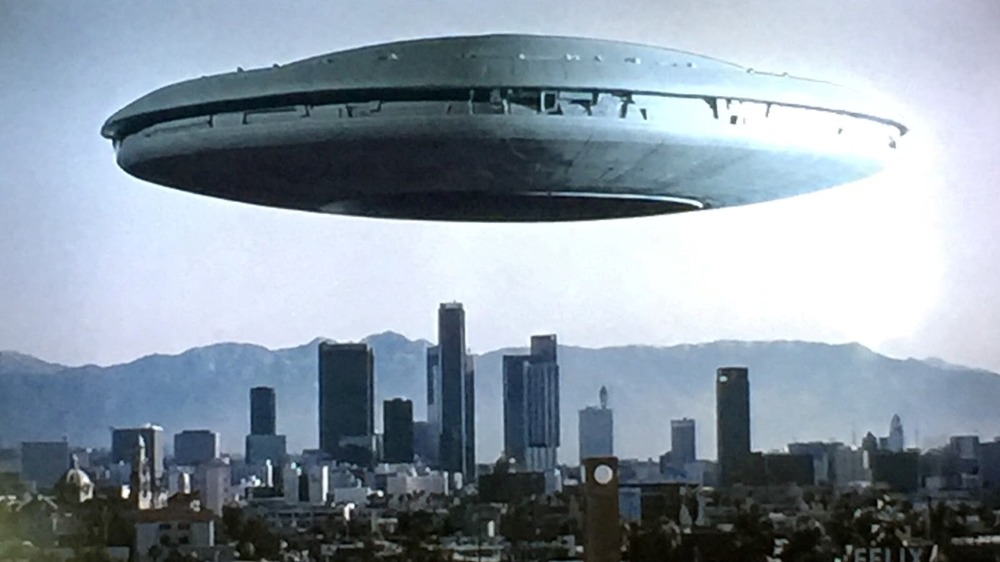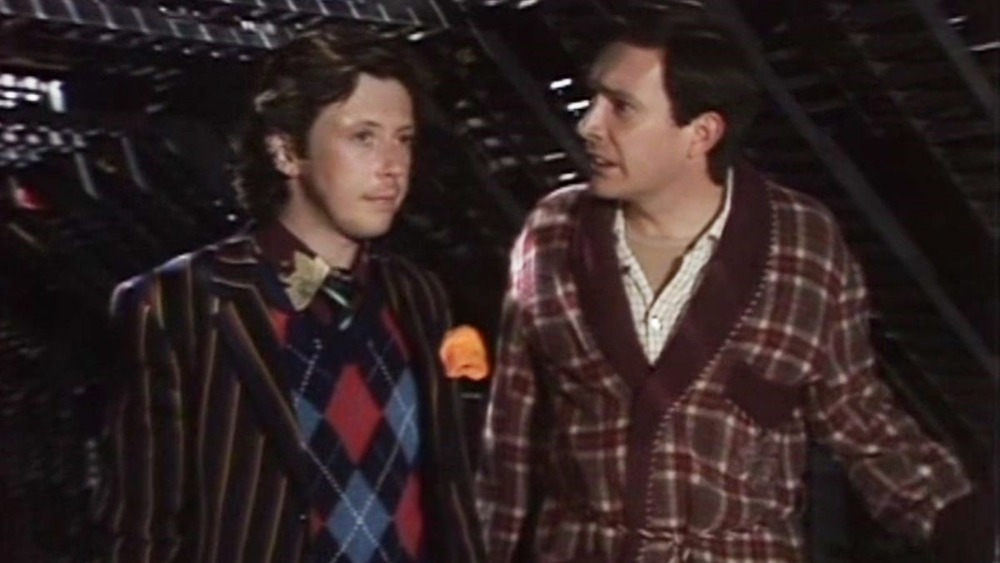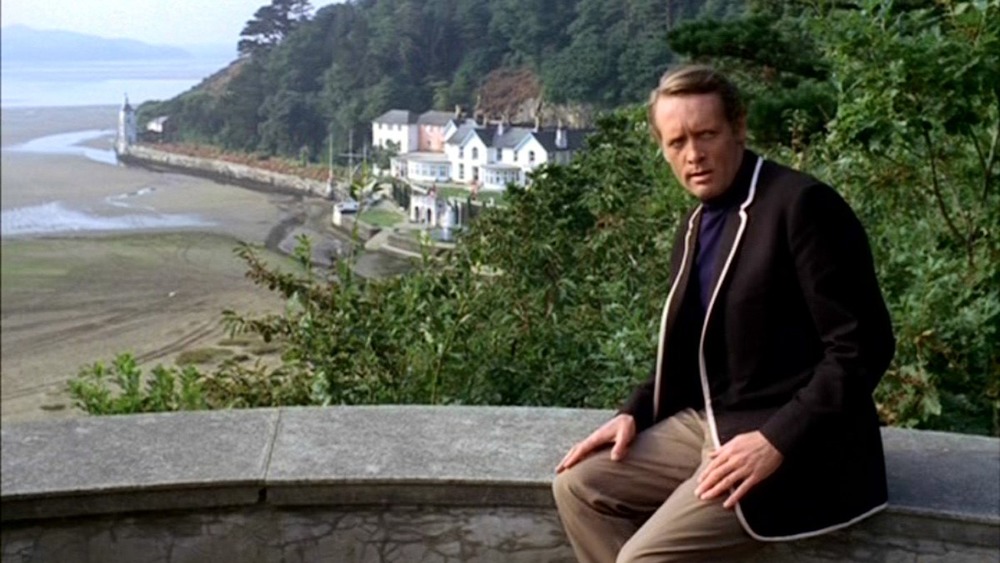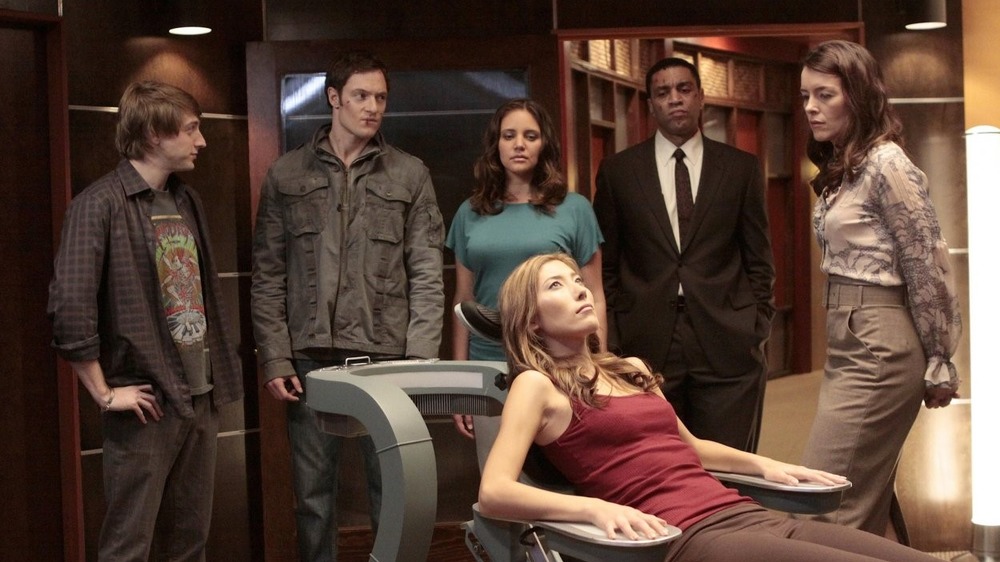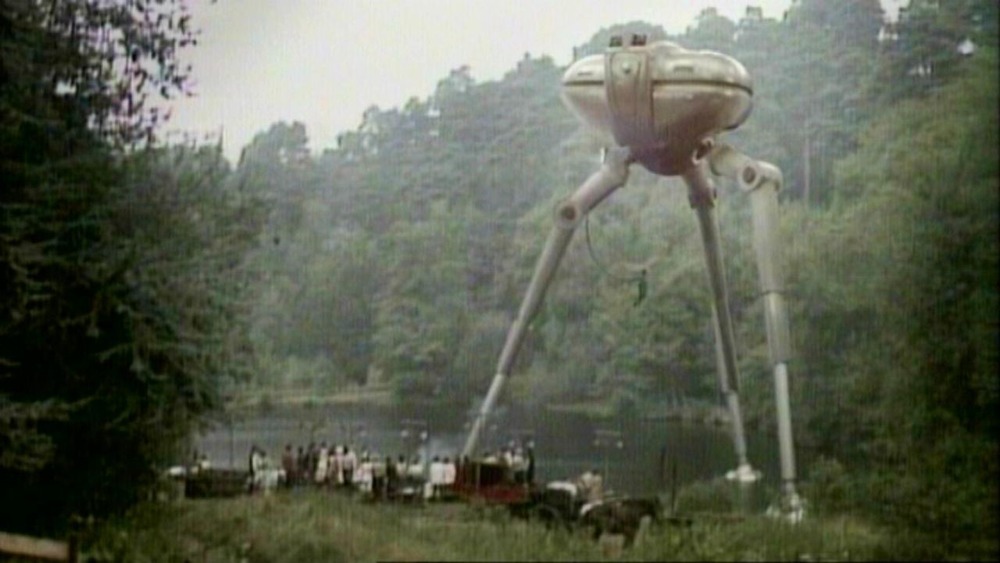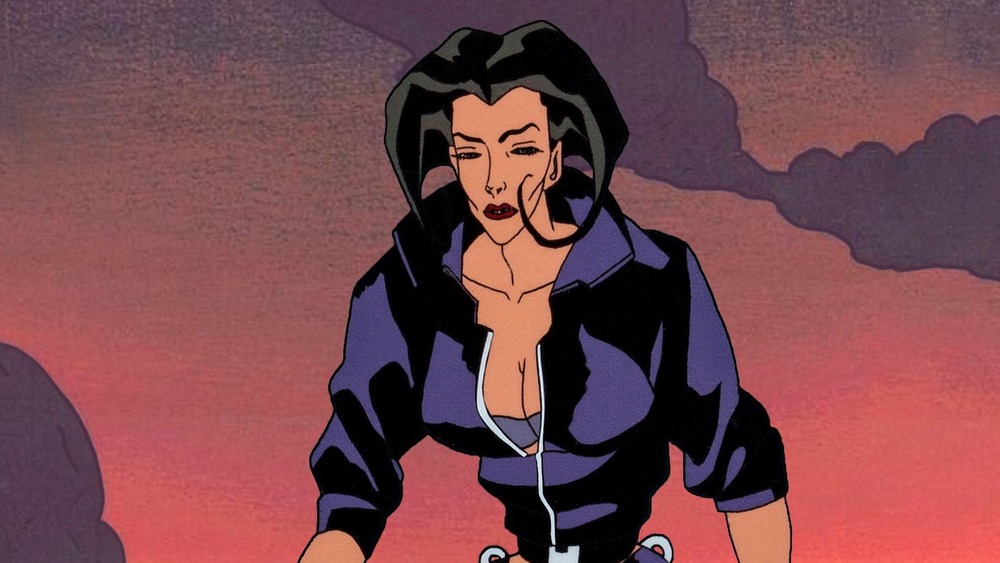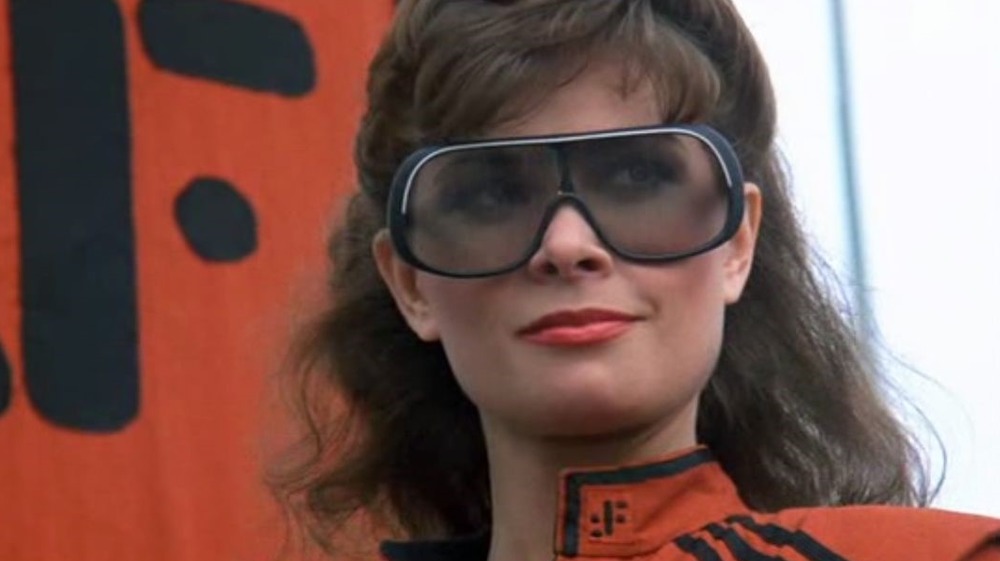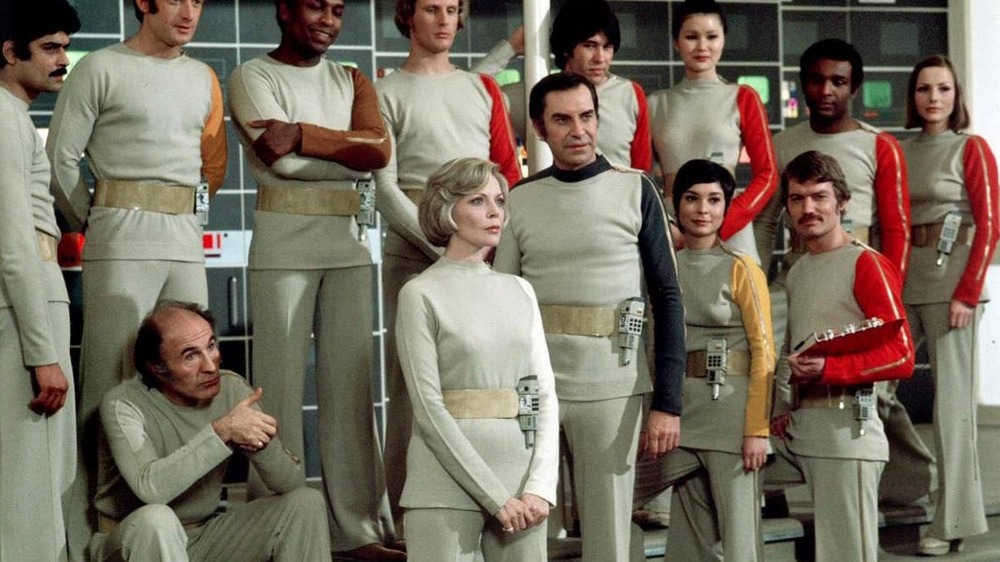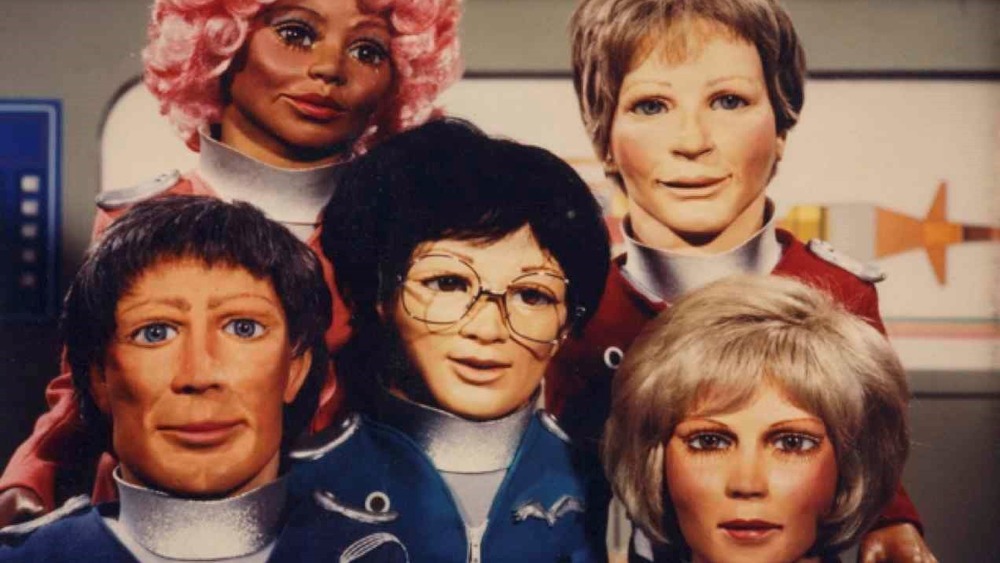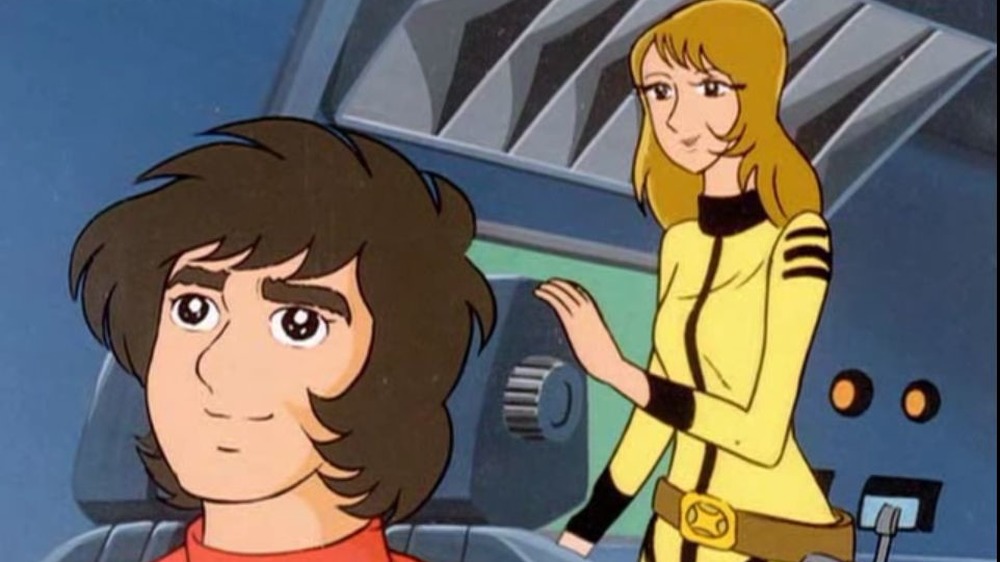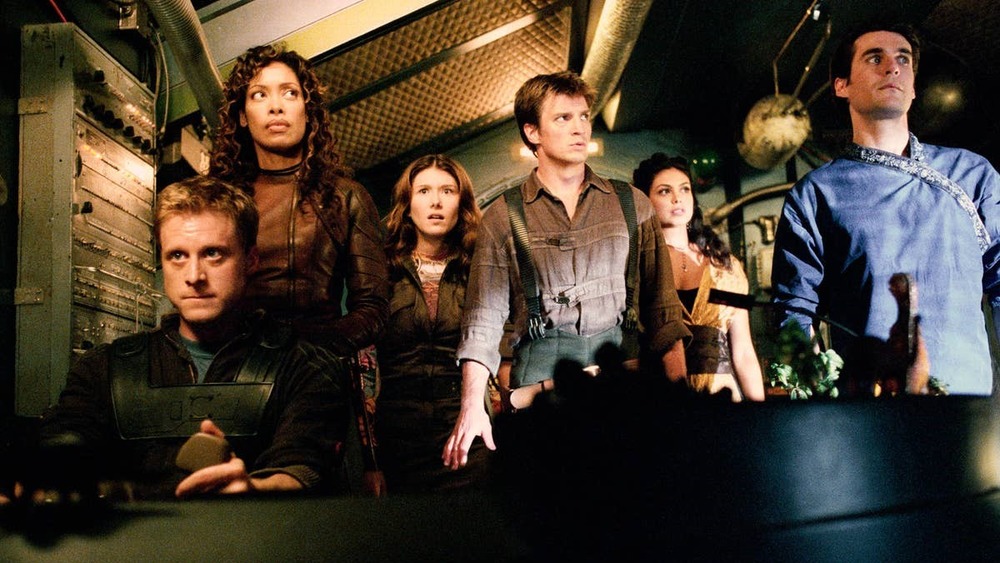Underrated Sci-Fi TV Shows With A Cult Following You Need To Watch
There are sci-fi shows you've never seen but have heard about. These are the programs your friends have recommended, social media has formed fan groups around, and cosplayers have extolled in the hallways of comic and film conventions. Yet these shows have not often risen to a level of success that causes them to be embraced by larger mainstream audiences, or if they have, they've been changed to be less challenging and more universally crowd-pleasing.
These efforts frequently tackled social issues and tough subjects reframed as broad entertainments full of special effects and alien cultures. They found novel ways to slip life lessons and cautionary tales into the comfort food of genre productions, but didn't catch fire and become legends quite like Star Trek, Doctor Who, Battlestar Galactica and others did. Are you ready to learn more? Here are ten underrated sci-fi TV shows with a cult following that you need to watch.
The Hitchhiker's Guide To The Galaxy (BBC, 1981)
It's been a radio program, a stage play, a series of novels, a comic book, and a towel (it's complicated), but Douglas Adams' epic about a very average Brit's hapless journey across the universe after Earth's destruction remains better known by name than content. Adams famously noted the idea for The Hitchhiker's Guide to the Galaxy came to him while lying drunk in a field in Innsbruck. The story also arrived after Adams' work with Monty Python's Graham Chapman on the short-lived six-episode TV series, The Ends of the Earth, each of which would deal with the destruction of the planet for a completely different reason.
Adams completed a group of speculation scripts for Hitchhiker's as a demonstration of what he could offer the British Broadcasting Company. Impressed by his work, the BBC commissioned a Doctor Who serial from him, while at the same time, Hitchhiker's was accepted for BBC Radio.
Adapting the radio Hitchhiker's to TV brought unique challenges. Actor Peter Jones provided narration as "The Book" for the radio show, and this aspect was integral to the storytelling. However, narration was difficult to do within the visual medium of television without being obtrusive. The narration remained but was tied to a series of innovative animation segments that not only retained the text from previous iterations, but offered a lower-cost alternative to scenes that would have blown the BBC budget had they been attempted by the special effects department.
The Prisoner (ITV, 1967)
A secret agent for British intelligence resigns and retreats to his apartment. He is drugged and spirited away to an island-bound community known as The Village. The former agent is told he will be known as No. 6 from now on as the shadowy operators of The Village attempt to pry his mind for whatever knowledge he may have. His response is rebellion: "I am not a number, I am a free man."
From here, No. 6, played by The Prisoner's co-creator Patrick McGoohan, will be lied to, drugged, seduced, and potentially made crazy by an endless series of persecutors, all operating as the No. 2 of the community.
McGoohan regularly called the surreal show a stand-alone effort. However, co-creator George Markstein stated The Prisoner was a sequel to McGoohan's previous TV series, Danger Man (1960). Markstein suggested that the idea of The Village, a secluded location where high-value agents are retired, was floated casually by Danger Man protagonist John Drake. Unbeknownst to him, the idea was carried through. Drake, now No. 6, would have been the victim of his own idea. This was suggested in the series' final episode, "Fall Out," wherein No. 6 is revealed to be No. 1, or rather "I," the ultimate architect of The Village.
The Prisoner's impact has grown over time into a remake, a comic book sequel, a tribute episode on The Simpsons, the inspiration for Michael Penn's 1997 album Resigned, and Dhani Harrison's band, The New No. 2.
Dollhouse (Fox, 2009)
A corporation runs a worldwide network of underground establishments that program people with temporary personalities and skills. These "Actives" are loaned out like temps to wealthy clients for whatever illicit purpose said client wants. The Actives have had their own personalities recorded digitally, leaving them as blank slates until they are contracted. Their memories will be wiped again after they've performed the contracted services.
They are in "the dollhouse" of their own accord, purportedly, for a five-year term. In exchange, they will receive either a large sum of money or extraordinary interventions of some kind after their term. They will also have their original personalities restored.
An Active named Echo (Eliza Dushku) begins remembering small portions of these paid encounters. Other Actives have been driven crazy from learning the deeds they've done without their conscious consent. In later episodes, the technology that facilitates mind-wiping gets out into the world. Any semblance of choice has been removed by those who simply want to abuse the power.
Are the Actives truly responsible for their heinous acts if they didn't consciously initiate them and don't remember them after the fact? What happens when that floodgate of memories and guilt cracks open? Can they live with the consequences while acting with minds not their own?
A modern parable of lost identities, stolen autonomy, and slavery in the digital age, Dollhouse asked the provocative question, "Who needs robots when you can rent people to do what you want?"
The Tripods (BBC, 1984)
Before there were Young Adult series like The Hunger Games and the Divergent saga — before Young Adult was even a genre — there was The Tripods. Based on a three-book series (with a prequel book arriving later), John Christopher's story is about three young boys attempting to not be "capped," essentially being lobotomized with implanted technology by an alien culture. Capping causes the citizenry to be placid, accepting, and not inclined to rebel against the new alien overlords.
The titular Tripods are large mecha that resemble the alien invaders from H.G. Wells' War of the Worlds. The Tripods is unrelated to Wells in any official way, but it's easy to presume Christopher imagined what society might become if the Martian death walkers did not contract the common cold and die off.
The series, designed by the BBC to occupy the "tea time" Saturday slot previously filled by Doctor Who, stunned audiences with what were at that time advanced special effects. Unfortunately, only two seasons of the show aired, adapting the first two books. The show arrived in the 1980s via PBS for U.S. audiences, just in time to capitalize on brewing "1984" paranoia and concerns about Big Brother, fears that fueled The Tripods' "life after the invasion/occupation" narratives.
Aeon Flux (MTV, 1991)
In the early 1990s, MTV was moving away from the music videos that made the network. One of the first programs was Liquid Television, an experimental animation show, and the character of Aeon Flux stood out from the pack of self-contained shorts. The series featured a six-part Aeon Flux serial, followed by five individual shorts, and eventually a series of its own.
The brainchild of animator Peter Chung, Aeon Flux is set in the year 7698 AD, in two cities separated by a wall, much like East and West Berlin during the Cold War. This dystopian world is populated with the expected robots and mutated creatures. Most of the global population has been killed by an environmental disaster.
Aeon Flux is an assassin from one of the cities on a mission to undermine the dictatorial control of the other. Flux's city is lawless while the other is completely authoritarian. The series plays on the ideas of polar opposites, with the woman protagonist a completely free individual, the male antagonist holding complete control of his city and everyone within it, and what happens in the gray area between the two.
While the story is compelling, the big draw for audiences was the unearthly physics of the main character and the world she traverses. The series feels extremely European, recalling the angularity of German Expressionism as well as the intricate design work of creators like Jean "Moebius" Giraud. It was a version of animation seldom seen on U.S. television.
V (NBC/ABC, 1983)
The 1980s mini-series V plays with Cold War fears, the creeping influence of fascism, and xenophobia in the guise of an alien invasion tale. The successful event spurred on a second mini-series and a regular television show. Earth is contacted by aliens who look completely human and promise they have come in peace. Some trust them and jockey to be in league with them. Others distrust their new interstellar friends. Those doubts are justified when they are found to be human-eating reptilian creatures in disguise.
While framed as an action-horror series, the series also delves into the seductive side of authoritarianism. Key protagonists in the show lose family members to the Visitors, actively becoming collaborators. A grandson of a Jewish Holocaust survivor falls under the spell of their power and assumes fascistic behaviors. The Holocaust survivor, disappointed and sickened by history repeating itself, becomes a locus for rebellion.
The subsequent series would also find Visitors rejecting their masters, attempting to peaceably assimilate into Earth society. This is best realized by the character of Willie, played by Robert Englund (best known as A Nightmare on Elm Street's Freddy Krueger). Despite his earnest efforts to fully learn the language and support the resistance cause, he is distrusted and harassed.
V is not necessarily about the hostile, deceptive invaders, nor some Earthlings' willingness to be consumed by them both ideologically and literally. It ends up being a fantastical allegory about the corrupting influence of power itself.
Space 1999 (ITV, 1975)
Moonbase Alpha is a scientific research center located on the moon. Unfortunately, the moon is also a dumping ground for Earth's nuclear waste. Accumulated radiation causes a thermonuclear reaction that blasts the moon, and Moonbase Alpha with it, out of its orbit and into the farthest reaches of space.
Created by Gerry and Sylvia Anderson, Space 1999 was developed by ITV as a rival to the BBC's sci-fi institution Doctor Who. Gerry Anderson, creator of the beloved "puppetmation" series Thunderbirds (which Trey Parker and Matt Stone satirized in Team America: World Police), was a respected creator, which in the mid-1970s afforded him the biggest budget for a British television show at that time.
Lasting only 48 episodes from 1975 to 1977, the series failed to stop Doctor Who during Tom Baker's second year in the role. Yet time has been kind to Space 1999 as a genre curiosity. Directors for the show included Charles Crichton (A Fish Called Wanda) and Peter Medak (The Changeling), among others. An international cast, including Americans Martin Landau and Barbara Bain, gave the series enough familiarity to frequently position it in U.S. syndication alongside another cult classic with a long afterlife, the original Star Trek.
Terrahawks (Anderson Entertainment, 1983)
Gerry Anderson and creative partner Christopher Burr took Anderson's "Supermarionation" from the '60s Thunderbirds series into the 1980s. Debuting in the U.S. between genre favorites like Voltron and Transformers, Terrahawks arrived with a unique look and tongue-in-cheek attitude that set it apart.
In the year 2020, NASA's Mars base has been destroyed by alien attackers. The Terrahawks, an independent defense force, remain to defend Earth from the androids of planet Guk, led by the wicked Zelda. She is aided by her son Yung-Star, her air-headed sister Cy-star, and the personality-afflicted It-Star.
The series regularly found Zelda developing a new attack plan weekly, only to be thwarted by the Terrahawks team, led by Doctor "Tiger" Ninestein, Captain Mary Falconer, and Captain Kate Kestrel who is not only a fighter pilot, but a pop star.
The secret weapon of the Terrahawks program was neither the toy-ready vehicles littered throughout, nor the grotesque characters that could be one step removed from Madballs or Garbage Pail Kids, but the stories themselves, which play out like parodies of the children's television genre. Leaning hard into some of the most overused tropes, Terrahawks throws puns, asides, and knowing self-deprecation into the mix, giving parents epic moments of groan-worthiness that fly straight over the heads of most of the intended audience.
The series lives on as audio dramas created by Big Finish Productions, the company which also offers stories from Doctor Who, The Prisoner, and Torchwood.
Star Blazers (1979)
For many Americans, Star Blazers was their first experience of serialized anime. Translated from its original Japanese series, Space Battleship Yamato, Star Blazers tells the story of a starship crew from Earth responding to a message of aid from the planet Iscandar. They are charged with retrieving a device which will reverse the radiation infecting Earth from a bombing by an invading civilization called the Gamilons.
The show ran in syndication in the U.S. from 1979 to 1984. Bowing to the interest in "space opera" spurred by the success of Star Wars (1977), Star Blazers' translation adopted a very Western tone, as evident in the title itself, along with the lead character's Americanized name Derek Wildstar.
Aside from its dedicated serialized format, the series was also highly regarded for its depictions of war and consequences, raising the stakes as the characters' survival was never fully guaranteed. These features carry over from the original Japanese series, which aired from 1974 to 1980. Even so, other aspects had to be edited out to suit the requirements of American children's television. Yet Star Blazers remains mostly faithful to its original content, while previous Japan/U.S. conversions required more dramatic exclusions of violence and adult content.
The series was optioned several years ago for an American film adaptation, with Mission: Impossible screenwriter/director Christopher McQuarrie attached as director. The property has also seen several comic book adaptations and continuations over the years.
Firefly (Fox, 2002)
Firefly was Joss Whedon's follow-up to Buffy, The Vampire Slayer. It centered on a ragtag group of renegade bandits, once part of more respected institutions of the galaxy — the military, the church, etc. — now gone rogue. Their underlying mission becomes the care and safety of a young girl who appears to also be a high-value weapon. Her brother, primarily involved with her care, is her intermediary as she seems very confused and scattered given the abuse she has suffered.
One of sci-fi's biggest cult series, Firefly had 14 episodes shot but only 11 aired in its original run on Fox, adding to its mystique. Fans connected with the American Western trappings of the series, calling themselves "Browncoats" after the clothing of choice for the renegade crew of Serenity, the show's "Firefly-class" spaceship. The fans couldn't persuade Fox to bring back the show, but it did attract attention from Universal, for whom Whedon wrote and directed a feature-length theatrical sequel, Serenity (2005), in hopes of reviving Firefly. Poor box office receipts of $10.1 million on its first weekend and a quick departure from theaters dashed those hopes.
However, the show has persisted on DVD, in streaming, and in a series of books written both by Joss Whedon and his brother Zack, among others. Fans remain hopeful that in the new world of streaming, and with the mash-up aesthetic of Lucasfilm's The Mandalorian presently in vogue, there may yet be a revival for Firefly in store.
